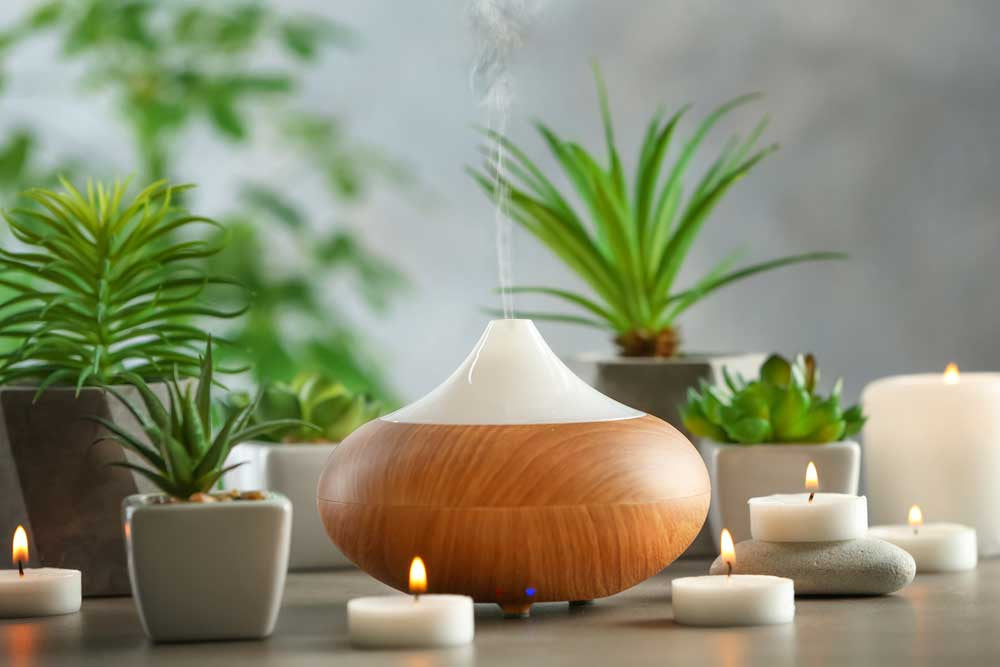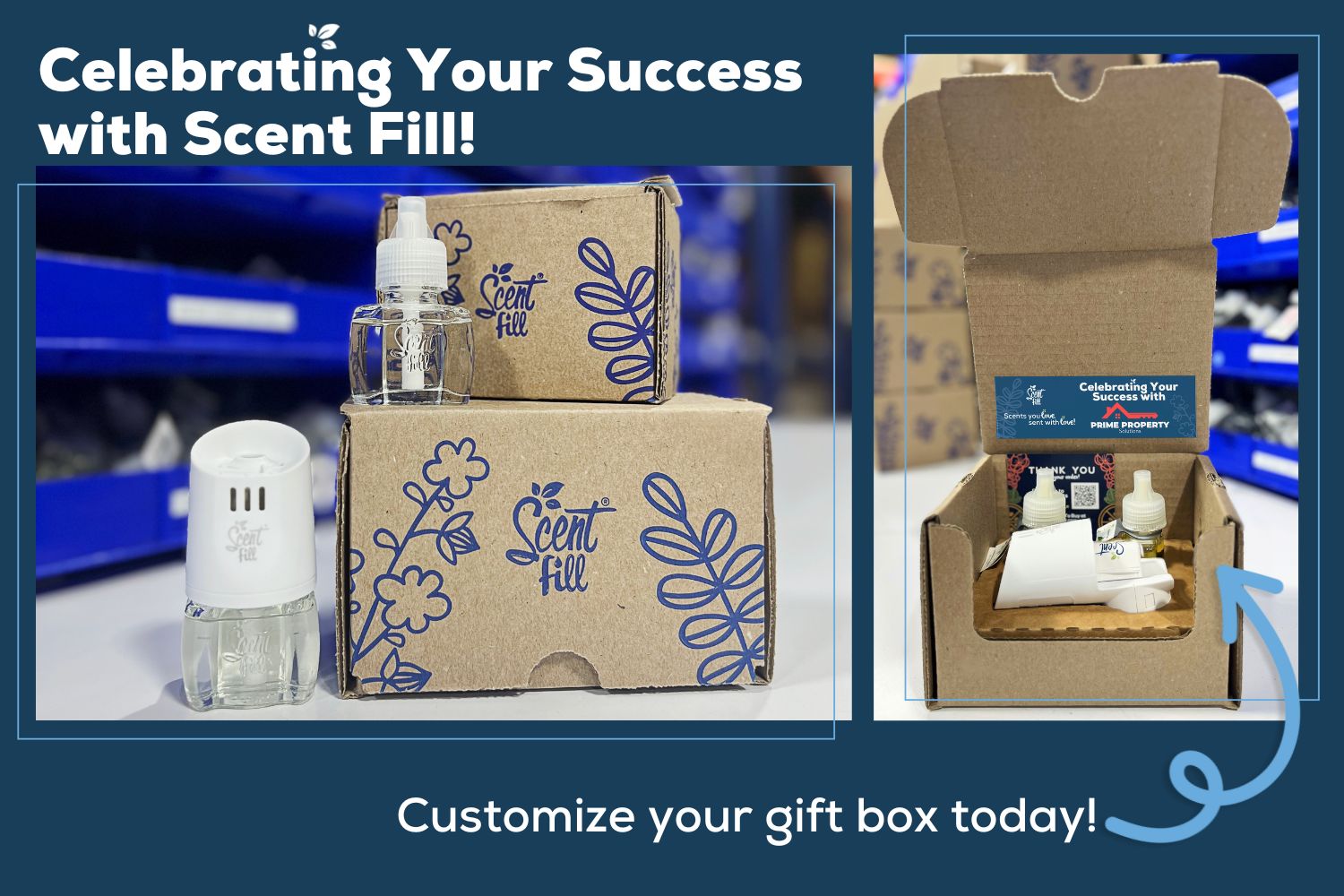If you enjoy the scents of a flower, citrus or spices you’ve come into contact with essential oils. These naturally-occurring essential oils are concentrated essences found in flowers, seeds, bark, roots, stems and other parts of plants, usually extracted through distillation. And just to put into perspective how MUCH of the plant is necessary to create essential oil, it takes six pounds of lavender to make 30 ml of lavender essential oil and 10,000 pounds of rose petals to make a single pound of rose oil.
Essential oils have been used for centuries, not only for their fragrance, but also for food preparation and health-care practices.
In fact, the growing popularity of essential oils and aromatherapy in our culture today is the primary reason the global market for air fresheners is expected to reach 10.5 billion dollars by 2020.
Essential oils can be consumed in many forms, but one of the most common ways is using a diffuser. That said, there are a multitude of options. Diffusers, alone, can be divided broadly into two groups: active and passive. Active diffusers use pumps or ultrasonic technology to release oil particles into the air. Passive diffusers cause the oil to evaporate, creating a pleasant aroma.
For the purpose of this article, we will be taking a look at both active and passive diffusers to help you identify which best meets your needs.
- Nebulizing Diffusers
This type of diffuser uses a pressurized, high speed air stream and an atomizing nozzle to break the essential oils down into tiny particles. The rate of evaporation is accelerated and occurs almost instantly.
This type of diffuser is one of the best choices if you want to use essential oils for aromatherapy, since the cold diffusion process doesn’t alter the properties of the essential oil in any way. In fact, the negative ions that are released during diffusion can have a positive effect on stress.
The biggest down side of a nebulizing diffuser is that occasional cleaning is necessary to prevent oil residue. Some nebulizers can also be noisy, so it’s important to be selective about which product you select.
And finally, it’s important to know that because nebulizing diffusers rapidly put essential oils into the air, they tend to use oils at a higher rate.
- Ultrasonic diffusers.
This type of diffuser is very similar to the nebulizing diffuser, but the difference is that distilled water is added to the diffuser along with the oil. This means that the mist that is diffused is comprised of a combination of water and essential oils.
If you are concerned that you’re going to go through your stash of essential oils too quickly with the nebulizing diffuser, the ultrasonic diffuser could be a good choice for you. And since no heat is used, the active healing elements of the oil remain intact. That said, the oils ARE diluted, so you may feel that the health benefits are less pronounced. One downside of the ultrasonic diffuser is fragrance typically lasts only one to three hours before requiring additional oil and water.
Like the nebulizing diffuser, cleaning is frequently required .
- Evaporative diffusers.
Of all the different types of diffusers, evaporative diffusers are the most basic. These can be broken down into two types. One uses a fan to blow air through a filter or pad that has had essential oils dropped onto it. The air causes the oil to evaporate more quickly, creating a pleasant aroma in the room.
The other just uses the air current to diffuse the oil around a small area. This type of diffuser usually takes the form of a pendent, bracelet or personal oil diffuser.
Both forms are effective methods for adding a pleasant fragrance to a room. The down side, however, is that when the essential oil evaporates, some of the lighter components evaporate at a much faster rate than the heavier components. This method of evaporating may diminish the therapeutic properties that the oil, as a whole, had possessed.
- Heat diffusers.
Named appropriately, heat diffusers use heat to cause the essential oils to evaporate more quickly. The best heat diffusers use low levels of heat to produce more subtle aromas.
There are multiple styles of heat diffusers, including table top warmers and plug in oil diffusers. Table top oil warmers are effective for adding aroma into the air but because you’re adding drops of oil to water, they can potentially cause spills and pose a potential hazard to children and pets.
Plug in oil diffusers work well for emitting fragrance into the air but usually involve putting essential oil into a filter that must be periodically replaced. They only typically only work for a few hours at a time and can be a potential hazard to young children since they’re so easily accessible.
- Plug in warmers.
Plug in warmers typically contain less than an ounce of fluid and work by absorbing fragrance upwards through a porous fiberglass wick. They are plugged directly into the wall and they use five watts of power to heat the ceramic element that is encased around the wick. They only are heated to approximately 150 degrees Fahrenheit.
This type of plug in air freshener is less messy than the table top diffuser or even the plug in oil diffuser. They also last far longer, anywhere from three weeks to 90 days depending on where you set the dial on your plug in warmer.
The dial controls intensity and based on where you have it set, it exposes more or less of the wick to the heating element. By turning it higher, you’re exposing more of the wick to the heating element and evaporating the scented oil at a faster rate.
This type of oil diffuser has long lasting continual fragrance for up to 90 days and easy to use, requiring no cleanup or maintenance. The biggest downside of plug in scented oil warmers is that because the oils are heated, you’ll experience less of the healing properties that the oils contain. That said, we are proud to say that the Scent Fill products contain FAR MORE essential oils than most store-bought brands. Brands are only required to contain trace amounts of essential oils to make the claim that they “contain essential oils.”
Final Thoughts
There are definitely pros and cons to each type of diffuser. Some allow you to achieve the most healing properties but are messier and more expensive to use (since you’ll go through your oils more quickly). Others are long-lasting and easy to use but contain fewer of the healing capabilities.
At the end of the day, you need to choose the option that best meets your needs and your lifestyle.





1 comment
So my question really is – if glade plugins, bath and body works plug ins with many scents are harmful to the lungs? Could the heated oil albeit heated to 150 degrees still be a carcinogen ?